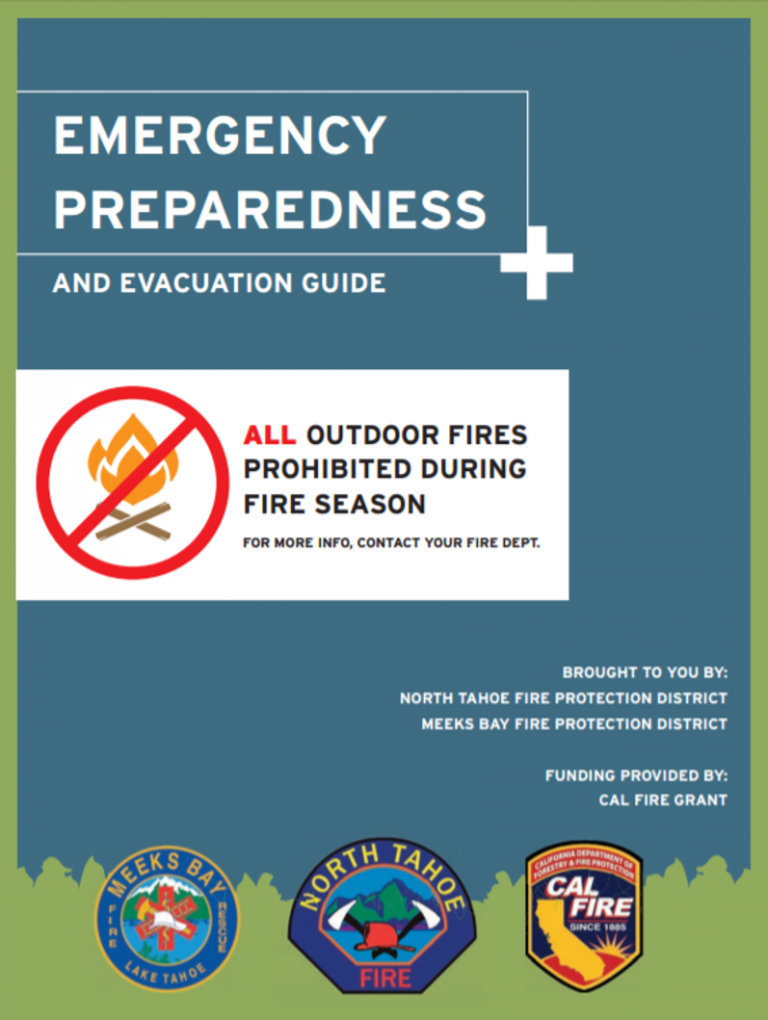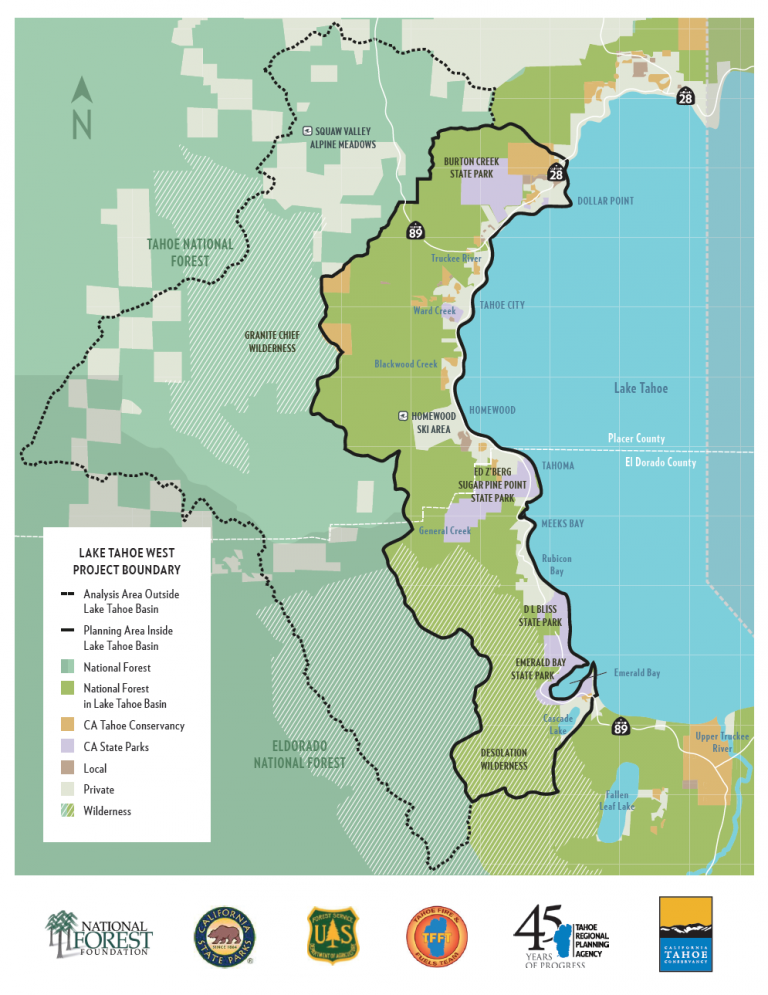This blog was originally posted on the Fire Adapted Communities Learning Network blog here. Forest Schafer works around the Tahoe Basin with the Tahoe Fire and Fuels Team and Allison Jolley is the Communications Manager for the Fire Adapted Communities Learning Network.
The Lake Tahoe Basin (basin), the location of the Fire Adapted Communities Learning Network’s 2017 annual workshop, is the epitome of a multi-jurisdictional landscape. At just over 200,000 acres, it covers portions of two states, five counties and seven local fire protection districts (FPDs). Different laws, policies, funding sources and stakeholders with common interests, but often competing priorities, create a complex socio-political landscape.
Despite all of that diversity, the basin is tied together ecologically as one watershed. The human community is also connected through a common identity, and through a dependence on tourism.
Tahoe’s Fire History and the Formation of TFFT
Due to logging, a decline in cultural burning and wildfire suppression, the basin is an example of a transition from a Jeffrey pine-dominant forest to an overly dense white fir forest. Wildfires have destroyed almost 300 homes in the basin in the last ten years. To address this risk and prevent future losses, in 2007, TFFT formed as a partnership of 20 agencies that coordinate and leverage fire adaptation work. Their progress was confirmed just last summer, when the 2016 Emerald Fire was successfully suppressed largely due to the fuel reduction projects and defensible space coordination that occurred before the fire.
Evacuation Planning for Congested, Narrow Roadways

Click here to learn more about North Tahoe and Meeks Bay Fire Protection District’s Emergency Preparedness Guide
A large part of addressing the challenges of wildfire preparedness in the basin involves evacuation planning. During the exchange, we learned about the basin’s current evacuation challenges, and how local FPDs are combining community outreach and planning to increase the safety of residents and visitors during wildfires. Evacuation during a wildfire presents a significant challenge because the basin has limited, primarily two-laned, evacuation routes. One way that North Tahoe and Meeks Bay FPDs have addressed that challenge is through the creation of an “Emergency Preparedness and Evacuation Guide” that they have distributed to residents, resorts and HOAs throughout the basin. Another approach to this challenge has been developing and promoting shelter-in-place strategies.
We also learned that new developments are required to have much more comprehensive evacuation and shelter-in-place plans prior to permitting. The combined use of planning requirements and corresponding building codes are ensuring that new infrastructure, and its residents, can better withstand fire.
Tahoe's Spin on Collaborative Restoration
We then looked toward the future of the basin by learning about the Lake Tahoe West Restoration Partnership, a collaborative which is taking a landscape-scale approach to integrating scientists, managers and community stakeholders into project design.
This partnership, led by the National Forest Foundation, is a collaboration between the Tahoe Fire and Fuels Team, the USFS Lake Tahoe Basin Management Unit, California State Parks, USFS Pacific Southwest Research Station, the California Tahoe Conservancy, the Tahoe Regional Planning Agency, local scientists and community members. The goal of the collaborative is to produce an implementation-ready, landscape-scale project that receives meaningful community feedback during the project design phase and is therefore easily expedited due to the collaborative design process. The project will be a suite of small projects that are all folded into one combined state and federal environmental document, but they will each advance landscape restoration (including hazardous fuels reduction). They are aiming to complete planning and begin implementation in 2020.

Map courtesy of Lake Tahoe Restoration Partnership
Click here to read the remainder of the blog post at Fire Adapted Communities Learning Network.

